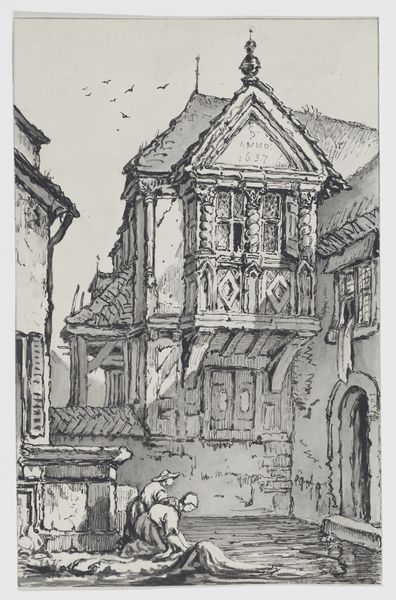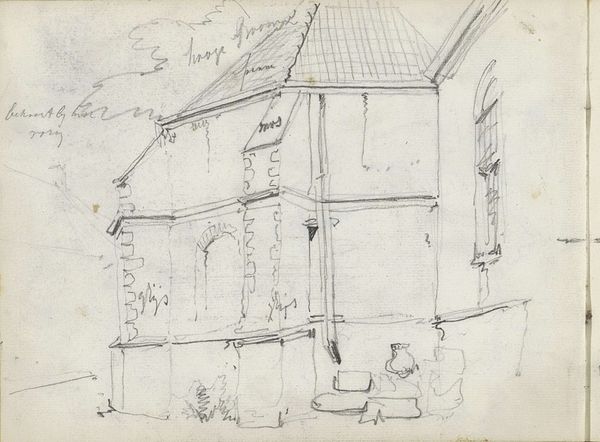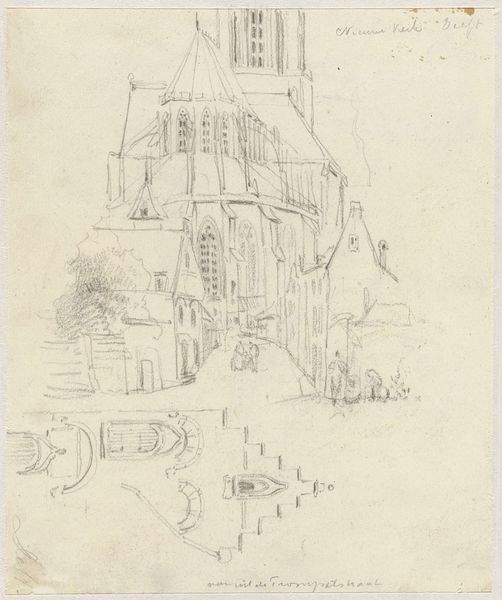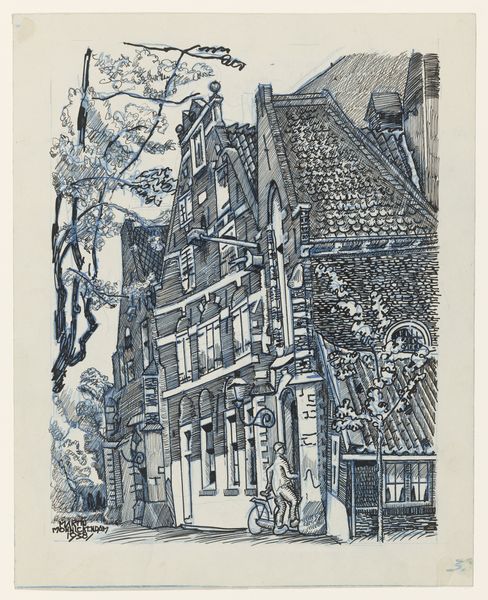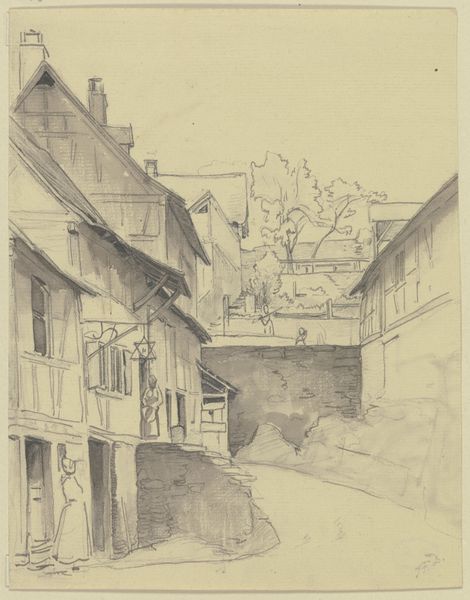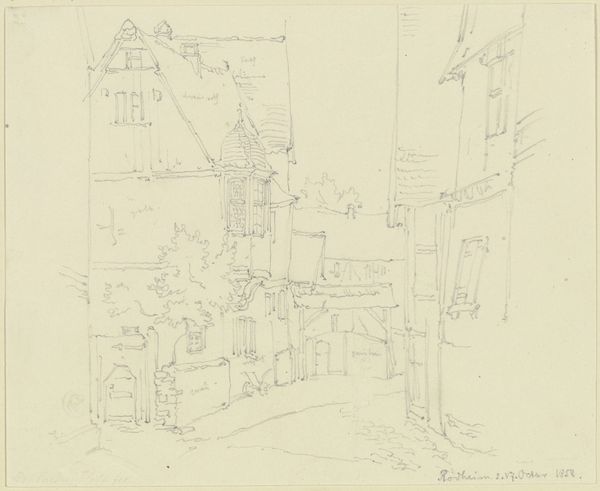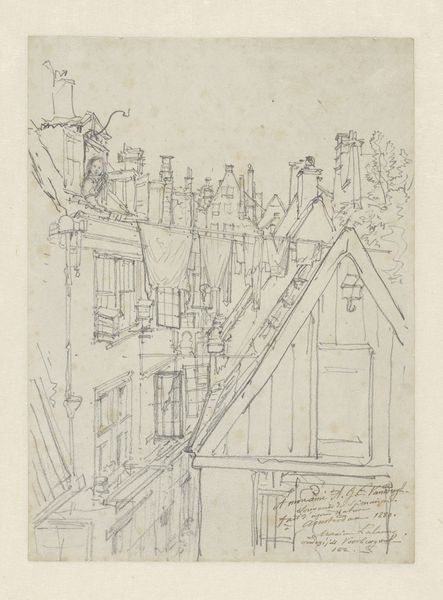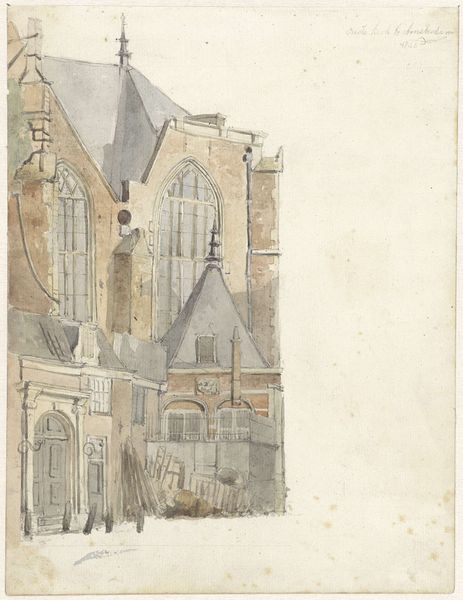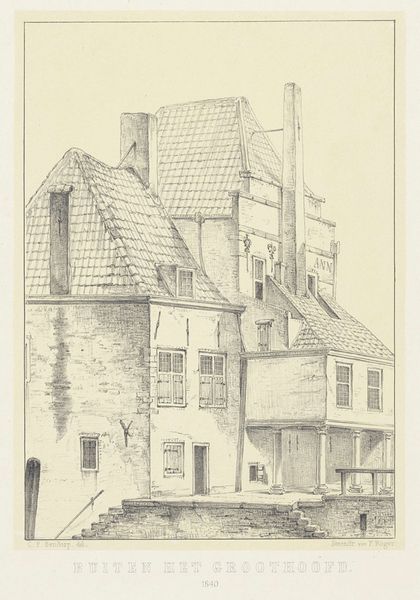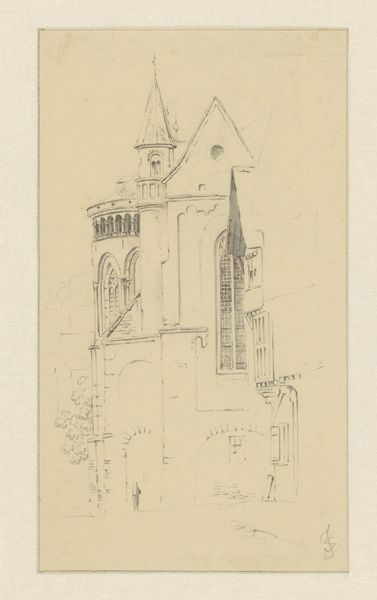
drawing, ink
#
drawing
#
dutch-golden-age
#
landscape
#
ink
#
cityscape
#
building
Dimensions: height 134 mm, width 149 mm
Copyright: Rijks Museum: Open Domain
Editor: This is "Boerenhuis," a drawing made with ink by Isaac van Ostade sometime between 1631 and 1649. It depicts a rural house, and I'm immediately struck by its slightly crooked, almost whimsical quality. What do you see in this piece, considering its place in art history? Curator: As a historian, I find this drawing fascinating for how it reflects the social landscape of the Dutch Golden Age. These genre scenes of everyday life, seemingly simple, were carefully constructed. This aesthetic, in part, represents the Dutch burghers embracing a distinct cultural identity after their independence from Spain. Have you considered the possible audiences of similar pieces? Editor: I haven't really considered the audience much beyond those of us looking at it in a museum today. You mean who would have viewed it back then? Curator: Precisely. Who was buying and collecting art like this? Think about the burgeoning middle class, the merchants, the individuals building their wealth through trade and commerce. What did they value? What kind of imagery might appeal to them? Editor: So, scenes like this validated their everyday experiences? Showing the normalcy and even beauty of rural life and hard work? Almost like a… a celebration of their values? Curator: Exactly! The art market in the Dutch Golden Age wasn’t solely for the aristocracy; a growing middle class sought to adorn their homes with images that mirrored their own lives and affirmed their values. And furthermore, where do you think similar scenes were commonly displayed, and why? Editor: Probably in their homes? Because, yes, it reflects how their lives are, they were very proud to have grown wealth on their own, I can totally see this on the house's wall! So it is like today people display photos from vacations, it shows the things they cherish! Curator: A very sharp comparison! It shows the democratization of art consumption, aligning imagery to reflect evolving socio-political forces, making public the idea of an individual's cherished values! Editor: That's fascinating! It makes me appreciate how art can reflect social values beyond just aesthetic appeal. Curator: Indeed. It reminds us that art always exists within a web of cultural and historical forces. Looking beyond aesthetics allows us to see the intricate dance between imagery and its public reception.
Comments
No comments
Be the first to comment and join the conversation on the ultimate creative platform.

